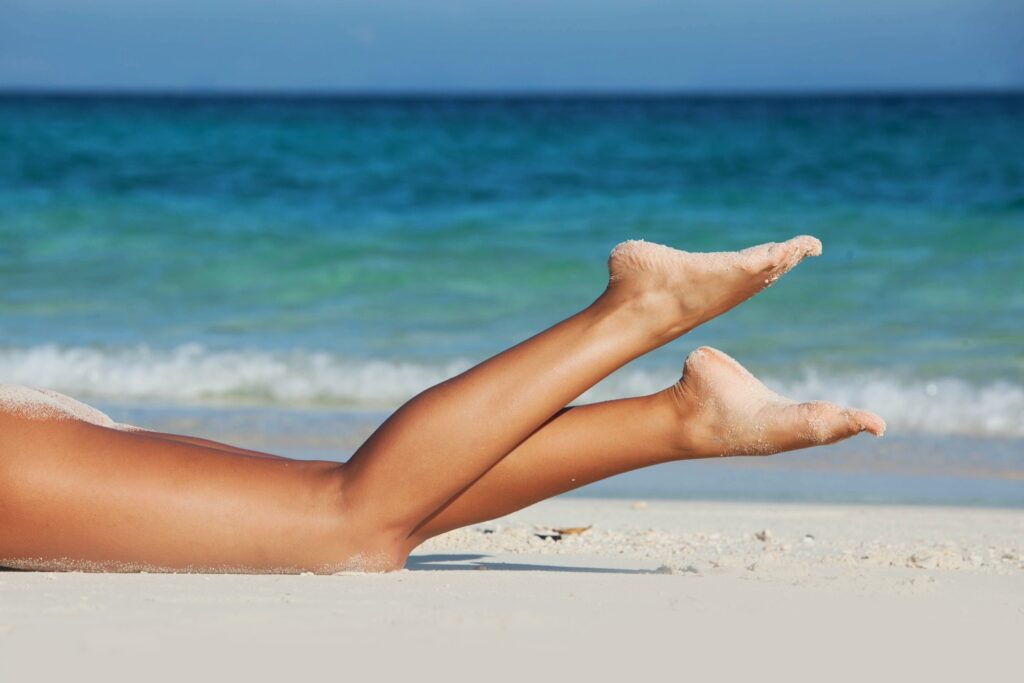Vitamin D is often referred to as the “sunshine vitamin” due to its unique relationship with sunlight. While sun exposure plays a crucial role in vitamin D production, it’s essential to strike a balance between reaping the benefits of vitamin D and protecting your skin from the harmful effects of UV radiation.
“Nowadays, so many of us work indoors and have limited time outside during the day,” says Dr. Adam Mamelak, Dermatologist and Mohs surgeon in Austin, Texas. Patients often have low Vitamin D levels for their health. “Ensuring our patients have optimal Vitamin D levels without over-exposing themselves to the sun or increasing their risk of skin cancer, has become a major focus for healthcare providers.”
The Importance of Vitamin D:
Vitamin D is a vital nutrient that plays numerous roles in the body, including:
- Bone Health: Vitamin D helps regulate calcium and phosphorus absorption, promoting healthy bone growth and maintenance.
- Immune Function: Vitamin D supports immune function and helps reduce the risk of infections and autoimmune diseases.
- Mood Regulation: Adequate vitamin D levels are associated with improved mood and reduced risk of depression.
- Heart Health: Vitamin D may help reduce the risk of cardiovascular disease by supporting heart function and regulating blood pressure.
How Vitamin D is Produced in the Skin:
Vitamin D is unique because it can be synthesized by the body when the skin is exposed to sunlight. The process begins when UVB radiation from the sun penetrates the skin and converts a cholesterol precursor molecule into vitamin D3, also known as cholecalciferol. Vitamin D3 then undergoes further conversion in the liver and kidneys to become the active form of vitamin D, known as calcitriol, which is used by the body for various functions.
Why Tanning is Not Recommended for Vitamin D Production:
While sun exposure is a natural and efficient way to produce vitamin D, tanning is not recommended as a method for achieving therapeutic levels of vitamin D. Excessive UV exposure from tanning beds or prolonged sun exposure increases the risk of skin cancer, premature aging, and other skin damage, outweighing any potential benefits of vitamin D production. Dermatologists emphasize the importance of obtaining vitamin D from safer sources to protect skin health and minimize the risk of UV-related skin damage.
Alternative Sources of Vitamin D:
In addition to sun exposure, there are other sources of vitamin D that can help maintain adequate levels in the body:
- Dietary Sources: Foods rich in vitamin D include fatty fish (such as salmon, mackerel, and sardines), fortified dairy products, eggs, and fortified cereals.
- Supplements: Vitamin D supplements are available over-the-counter and can be taken to ensure adequate intake, especially for individuals with limited sun exposure or those at higher risk of deficiency.
Ensuring Therapeutic Levels of Vitamin D:
To ensure optimal vitamin D levels in your body while minimizing sun exposure:
– Practice Sun Safety: Limit sun exposure during peak hours (10 a.m. to 4 p.m.), seek shade when outdoors, and wear protective clothing and sunscreen with SPF 30 or higher.
– Get Regular Check-ups: Talk to your healthcare provider about vitamin D testing and recommendations for supplementation if necessary.
– Maintain a Balanced Diet: Include vitamin D-rich foods in your diet and consider supplementation if dietary intake is insufficient.
Conclusion: Striking a Balance for Optimal Health
Vitamin D is essential for numerous bodily functions, and sun exposure is a natural way to produce this important nutrient. However, it’s crucial to balance the benefits of vitamin D production with the need to protect your skin from UV radiation. By practicing sun safety, incorporating vitamin D-rich foods into your diet, and considering supplementation when necessary, you can maintain optimal vitamin D levels and support overall health and well-being. Remember, moderation is key—prioritize sun protection while still enjoying the benefits of sunlight in a safe and responsible manner.

